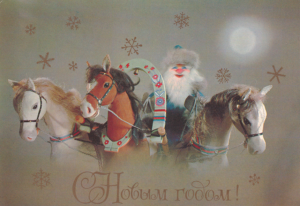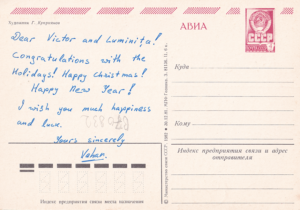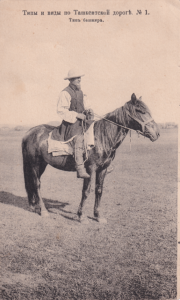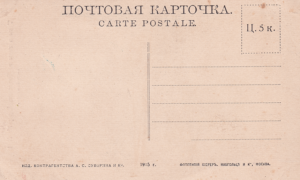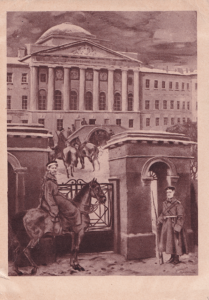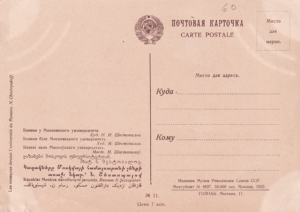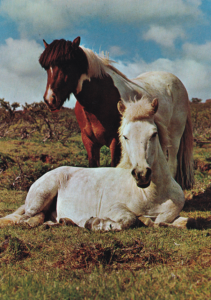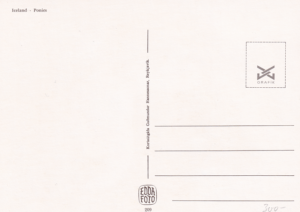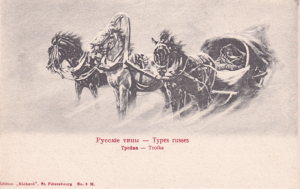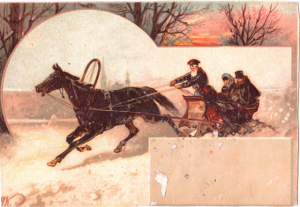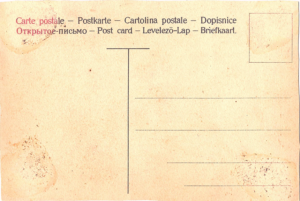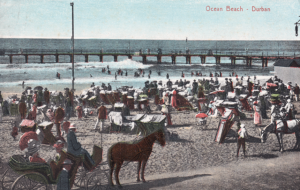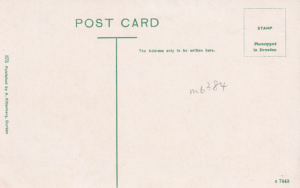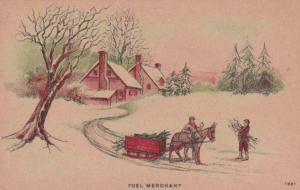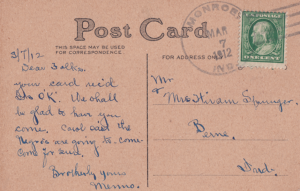"Troika".
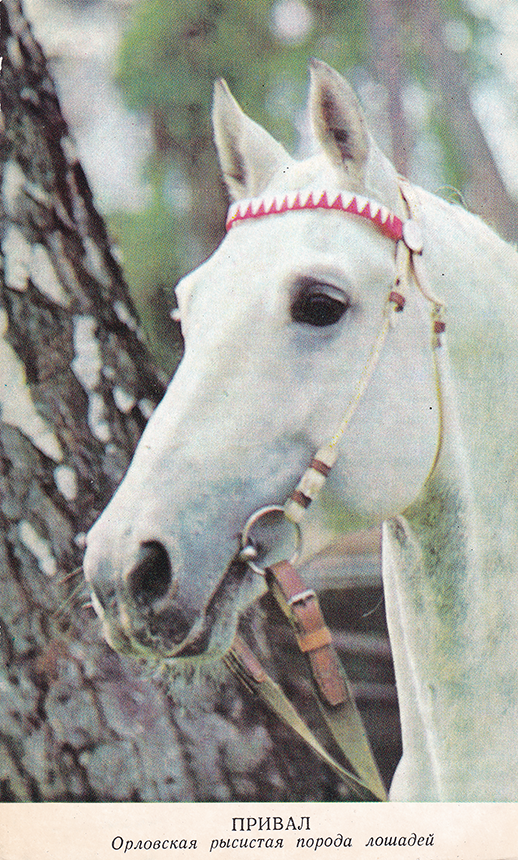
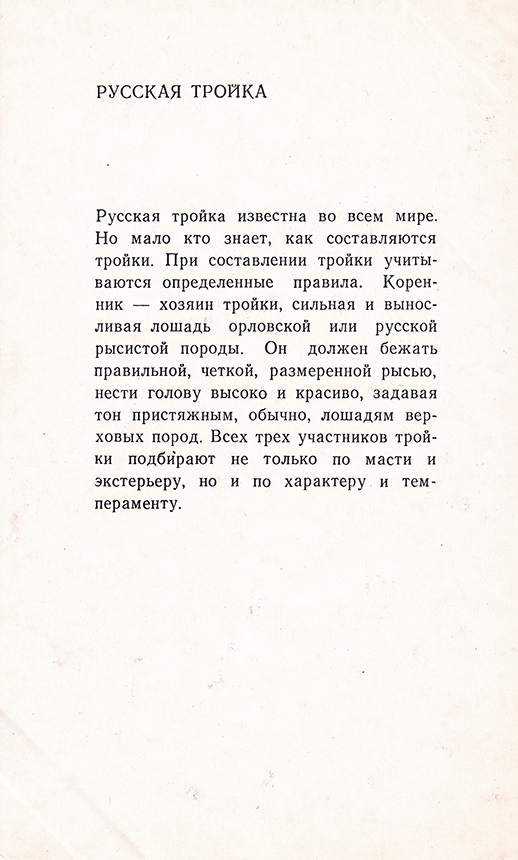
Reverse side of the postcard.
More information
"Troika".
The troika is traditionally driven using a lightweight carriage or sled called a "tróyka," which is well-suited for traversing snowy landscapes. The sled often has a distinctive curved shape and is known for its speed and maneuverability.
Symbolism and Cultural Significance: The troika holds great symbolism in Russian culture and represents swiftness, power, and unity. It is often associated with the Russian winter and is a common motif in folk songs, poems, and artwork. The troika is also seen as a symbol of national identity and pride.
Historical Use: Historically, the troika played a vital role in transportation and communication across the vast Russian territories. It was used for both personal and postal transportation, allowing for the rapid delivery of mail and goods. The troika's speed and endurance made it particularly well-suited for covering long distances in challenging weather conditions.
Folklore and Traditions: The troika has been immortalized in Russian folklore and literature. It is frequently mentioned in folk songs, poems, and stories, often portraying the troika as a symbol of bravery, adventure, and romanticism. The image of a troika dashing through the snow is an enduring and beloved symbol of Russian culture.
Object data
Title
"Troika".
Artist
L. Zdanov.
Founder
"Planeta" publishing house, Moscow.
Date
1972.
Culture
USSR.
Classification
Postcard.

